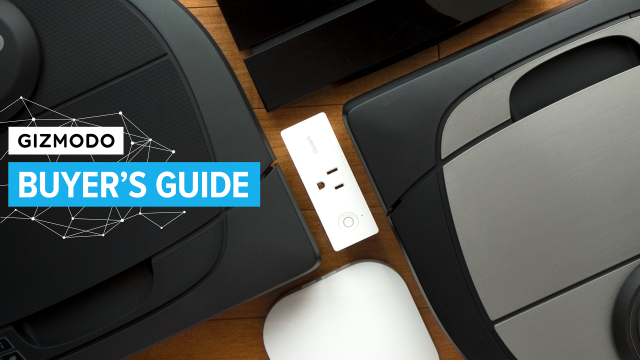Smart home gadgets have gotten a lot better over the past few years, and thanks to big improvements in wifi connectivity, energy efficiency, and more, it’s possible to control almost anything in your house with just your voice. Most of us are spending even more time at home recently (whether we like it or not), so now might be the perfect time to consider smartening up your humble abode. The hard part is knowing where to start. But don’t worry, here’s a long list of some of the best smart home gadgets on the market today.
Recent releases and buying forecast for summer 2020: Like phones, laptops, and tablets, smart home devices have been slowly trickling out through the spring and early summer. Back in May, August released its Tonal’s smart training machine offers a great way to lift weights without going to the gym, though at $US3,000 ($4,301), it definitely isn’t cheap.
Going forward, we’re expecting a number of refreshes for smart speakers from Google, Apple, Sonos, and others to arrive later this fall, along with a big wave of Wi-fi 6 routers in Q4.
The best whole home wifi solution
Who are you?
Your gadget-packed home is hopelessly dependent on a solid wifi network, but with multiple floors and countless rooms, your house is just too big for a single wireless router to provide adequate coverage for every last device.
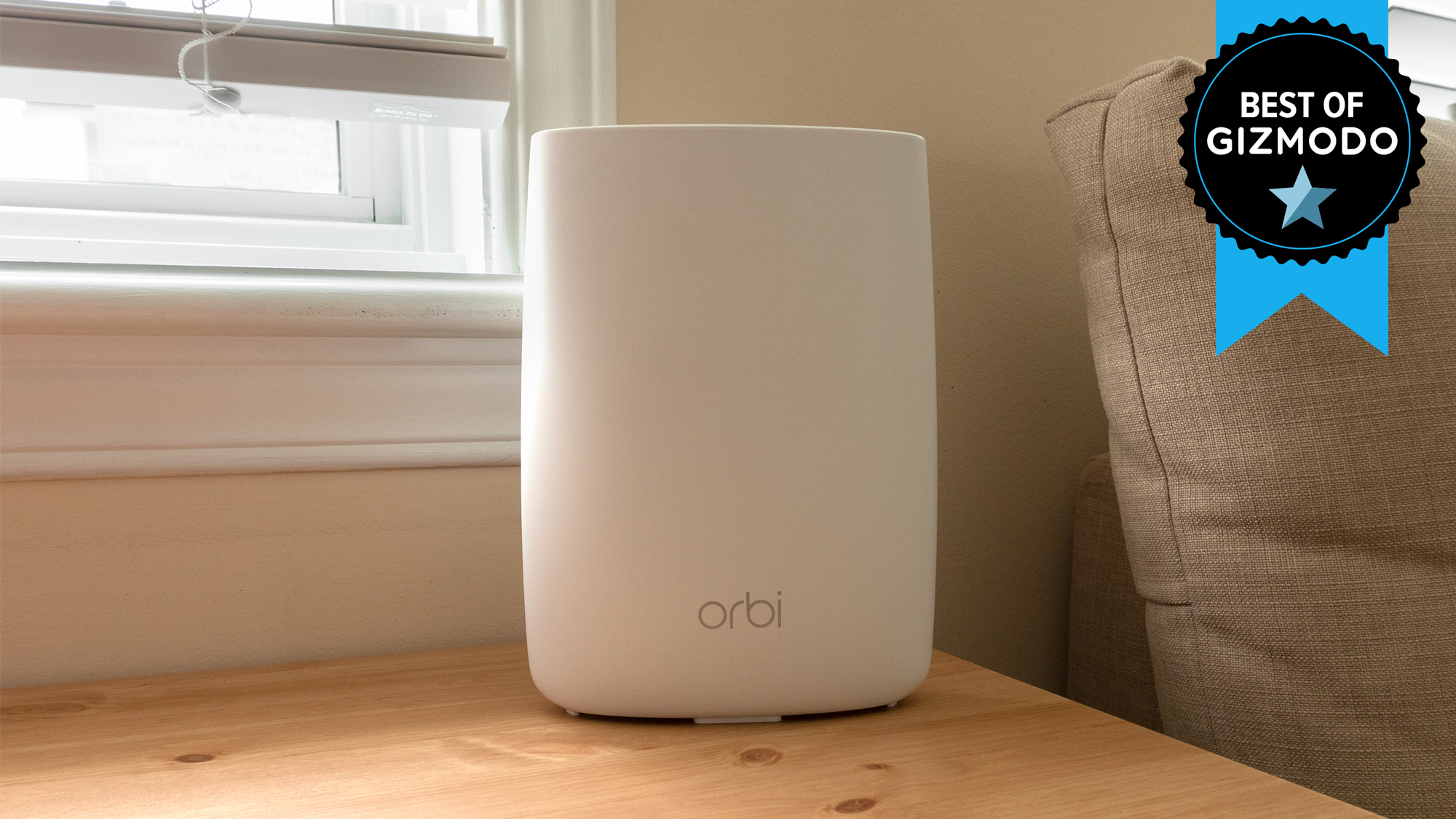
Our pick: Netgear Orbi ($US370 ($530))
If you can get over the fact the nodes look like a collection of glowing automatic air fresheners, Netgear’s Orbi RBK50 provides one of the best whole home wifi solutions, covering even larger homes with an expansive, reliable network that minimizes the number of times your devices need to hop between access points. As with other mesh networking solutions, you can use an app on your smartphone to easily set your whole network up, but the Orbi’s settings can also be accessed through a web browser (link: orbilogin.net), even if your actual internet connection isn’t working. The nodes and the base station all talk to each other using a dedicated wireless back channel to minimise congestion and maximise speed. Each node also comes with multiple gigabit ethernet ports to ensure solid internet connections for streaming boxes and game consoles, and a USB port for making devices like printers available to everyone on the network.
Also consider:
For users who haven’t connected any devices to the internet using a network cable in years, or don’t even know that’s an option, the new Google Nest Wifi ($US269 ($386) for the router and an access point) provides a more discreet and streamlined mesh networking solution. The setup process, which is completed using the same well-polished app that other Google smart home products use, includes easy access to network performance, as well as the ability to schedule internet access for specific devices, which is ideal for limiting kids’ online time. It’s a long overdue update to Google Wifi that introduces Google Assistant and speaker functionality to the router and access points that make certain network settings and options now accessible through simple voice commands.
The best smart assistant
Who are you?
You’ve come to grips with the fact that virtual assistants will eventually be everywhere, and you’re ready to welcome one into your home. You’d rather not have to reach for your phone every time you want to know the weather or check how your favourite team is doing, and you like the idea of being able to control all of your smart devices with a quick voice command.
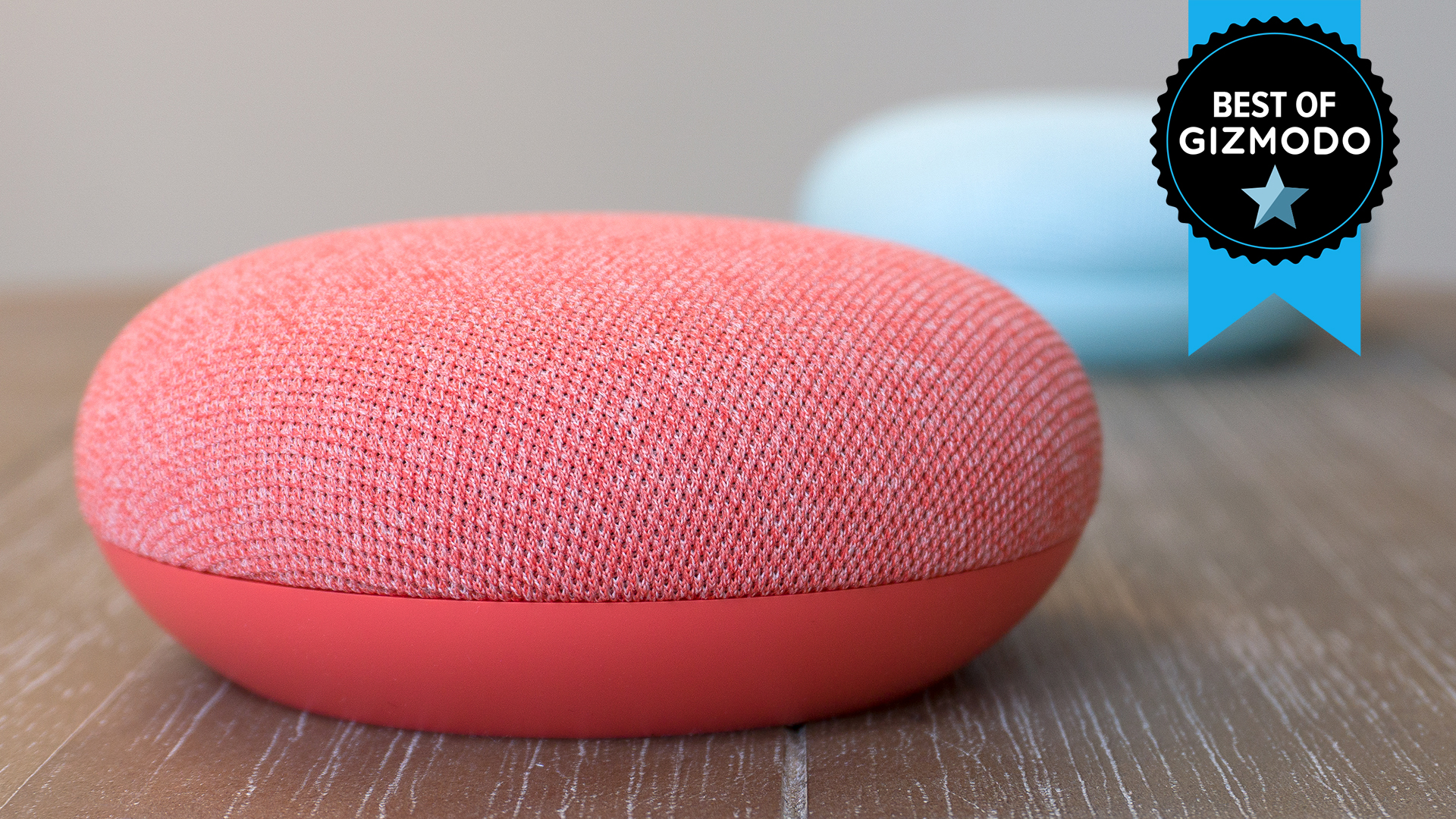
Our pick: Google Nest Mini ($US49 ($70))
To the naked eye, it doesn’t look like there’s much difference between the Google Home Mini and the new Google Nest Mini, but it’s what inside that counts. Google updated the diminutive smart speaker with extra status LEDs, a speaker with better bass performance, improved voice recognition and AI smarts thanks to a dedicated processing chip, and a third microphone so it can better hear your voice commands even in a noisy room. With a handful of new colour options, the Nest Mini remains an aesthetically pleasing, smart upgrade that will disappear amongst the knick-knacks in any room. And at $US49 ($70) it’s priced exactly the same as its predecessor — although it’s often given away for free with promotions for other products.
Also consider:
Amazon released its Alexa smart assistant before Google’s, so if you’ve already been using Alexa for years, and are fully entrenched in Amazon’s online ecosystem, the $US50 ($72) third-generation Echo Dot is the way to go. The latest generation of the product improves the appearance and sound of the Echo Dot, and it can be paired to a larger speaker for stereo sound with added bass. Alexa isn’t quite as capable as Google Assistant — you’ll find yourself having to pop into the mobile app to change certain settings — but it’s still light years beyond what Apple’s Siri can do.
The best robotic vacuum
Who are you?
You like to keep your home neat and tidy, but you don’t always have the time to go over all of your floors with a manual vacuum. You also don’t want to pay for a housekeeper, but you don’t mind splurging a little to eliminate one weekly chore from your to-do list.
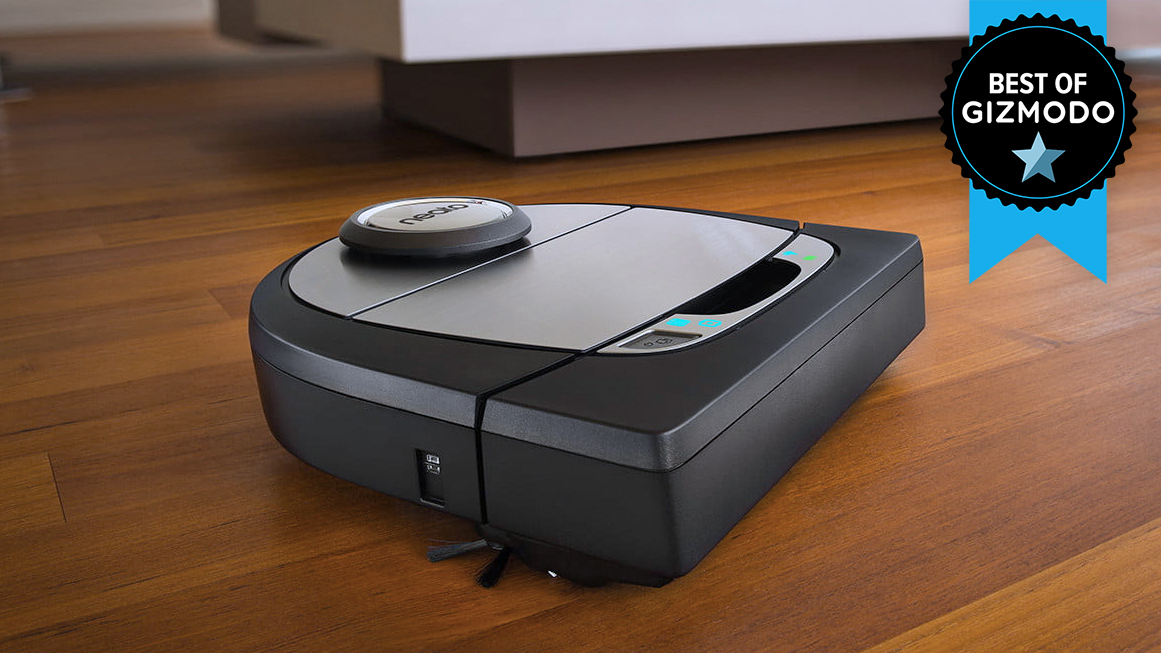
Our pick: Neato Botvac D7 Connected ($US800 ($1,147))
Neato might not be the first name that comes to mind when you think of robotic vacuum cleaners, but the company’s Botvac D7 packs some of the most advanced navigation technology of any autonomous cleaner on the market. Using lasers, it creates a detailed map of every room in your home, and through a free accompanying mobile app, you can draw virtual “no-go” lines to prevent the vacuum from wandering into areas that aren’t ready for cleaning just yet. (Think a messy bedroom.) You can also name specific rooms and areas in your home, and Neato has promised smart assistant functionality one day, allowing you to simply tell the vacuum to go and clean the kitchen.
Also consider:
If you’re especially lazy, iRobot’s Roomba i7+ is the first robotic vacuum that can actually empty itself when full, which is useful given how small the dirt bins are on these tiny autonomous cleaners. At $US950 ($1,362), you’re going to pay a little more for that convenience, which requires an elaborate dock that sucks dirt and debris out of the robovac when it’s parked, but you also get iRobot’s smartest robot to date, with room mapping, scheduling, and the ability to limit the vacuum’s cleaning routines to just a specific area using a mobile app.
The best smart home hub
Who are you?
You’re hopelessly addicted to asking your smart assistant questions about the weather, movie times, and even how long you should put that roast in the oven, but you sometimes find voice commands and spoken responses a limited way to control your entire smart home. It’s time to add a touchscreen to the mix.
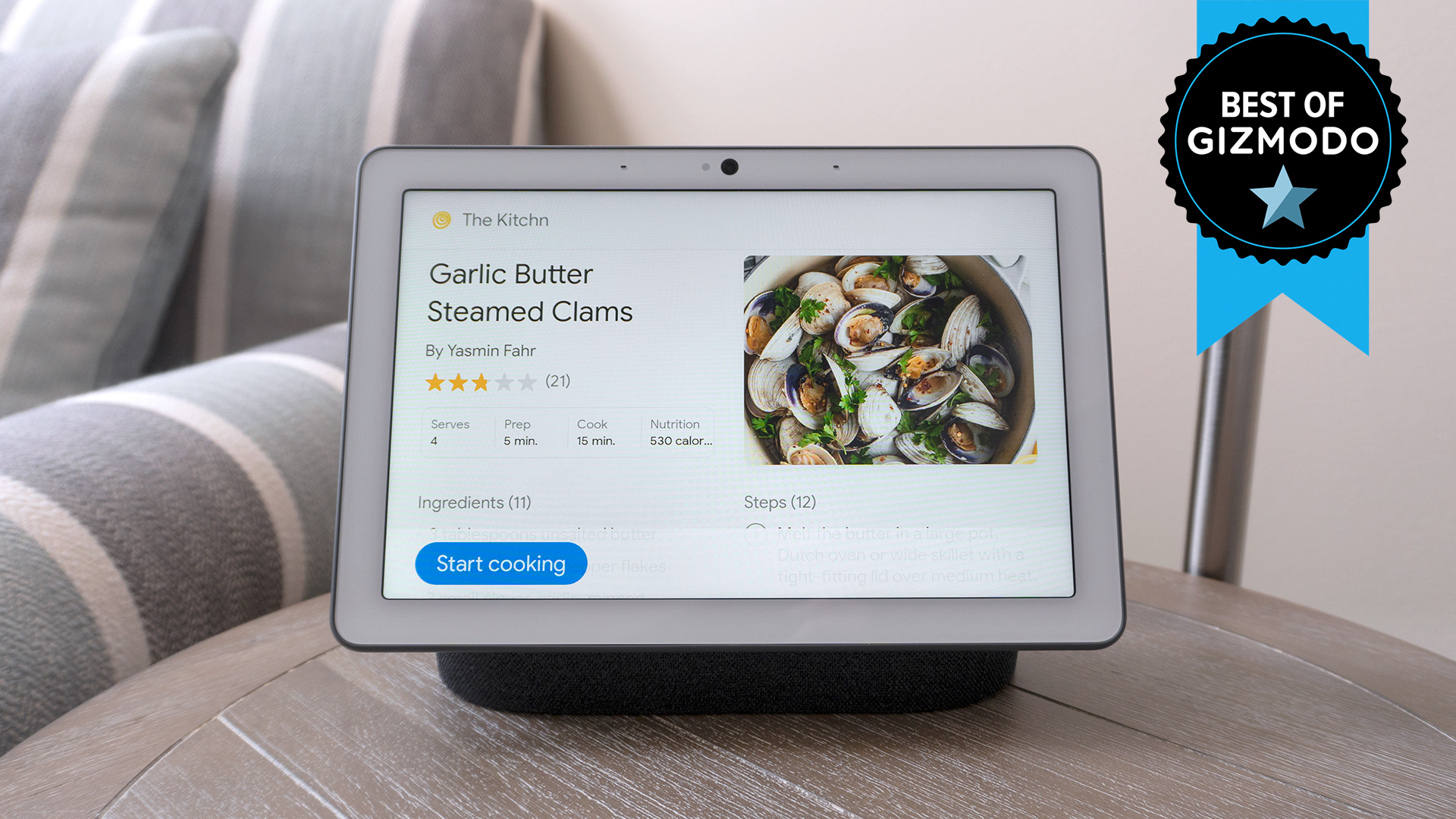
Our pick: Google Nest Hub Max ($229)
If you’ve decided to stomach all of your privacy concerns and jump into a smart assistant-powered smart home with both feet, Google’s $US229 ($328) Nest Hub Max is a solid update for the kitchen where most of the socialising happens in your home. It’s $US100 ($143) more than the smaller seven-inch Google Nest Hub, but that extra investment gets you a larger 10-inch screen, which makes recipes easier to follow from afar, a better speaker, and a front-facing camera that can automatically track, pan, and zoom in on you during video calls — although it does require everyone on the call to use Google Duo. If you’ve been squirrelling away photos for years on Google Photos but rarely go back and look at them, the Nest Hub Max is also one of the best digital photo frames out there, letting you enjoy slideshows like it was 2010 again.
Also consider:
Given Alexa was one of the first smart assistants to market, your home life might already be completely entrenched in all things Amazon. You’ll want to opt for the second-generation Echo Show in that case, which has a larger 10.1-inch touchscreen, a front-facing camera for making video calls, better speakers, and even native support for the wireless protocols that connect smart lightbulbs like Philips’ Hue system, making them easier to control. But at $US230 ($330), you’re paying a premium for all of those upgrades.
The best smart lock
Who are you?
If you’ve ever wanted to automate part of your house but don’t want to deal with hubs or a lot of messy setups, a smart lock is a great way to add convenience and security to your home without a ton of fuss.
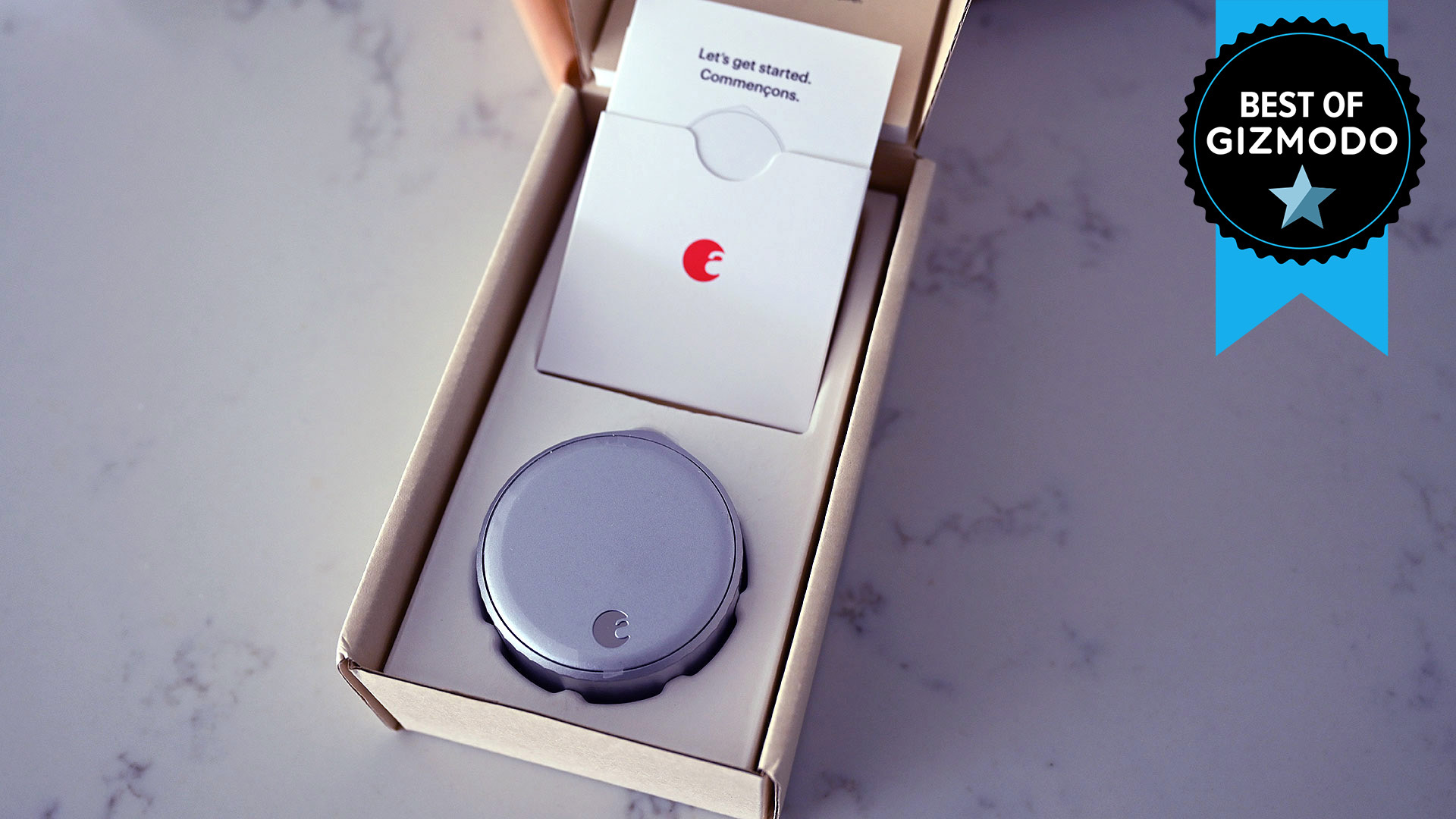
Our pick: August Wi-Fi Smart Lock ($US250 ($358))
After upgrading your home with smart lights, a smart lock is one of simplest and easiest house additions you can make. August’s Wi-Fi Smart Lock is our current favourite, because the lock attaches to the back of almost any deadbolt and can be removed just as easily, making it good for both renters and homeowners alike. On top of that, August’s latest smart lock has wifi built in, so you don’t have to shell out for an extra bridge to connect the lock to the rest of your home network like you did with previous models. The lock can also be set to automatically lock itself after anyone opens the door, and you can send out time-sensitive invites to guests, like dog walkers or repair personnel. And because the outside of your deadbolt is unchanged, if your wifi network goes down or something else goes wrong, you can still use a physical key to get in.
The only minor downside is that on certain Android phones, the auto-unlock feature can take a bit longer to work than ideal, but considering competitors like the Next x Yale lock doesn’t even have an auto-unlock feature, it’s hard to complain too much.
The best smart plug
Who are you?
If you’ve ever held your TV remote and wondered why every single device in your home can’t be controlled remotely, then a smart plug is for you. Or if you’ve wondered what all the smart home buzz is about, a smart plug is an easy and cheap way to get started.
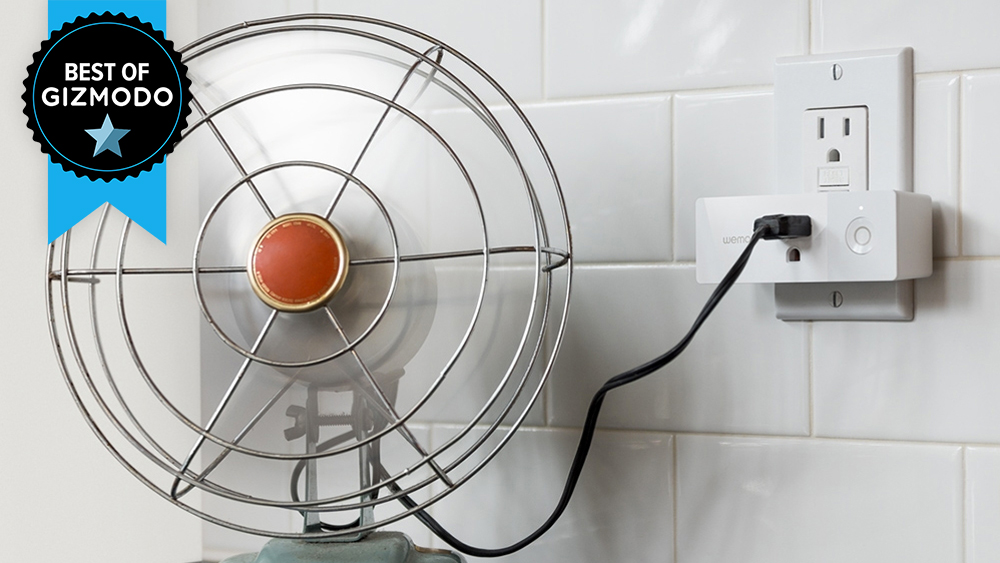
Our pick: Belkin Wemo Mini Smart Plug ($US30 ($43))
First introduced over six years ago, Belkin’s Wemo was one of the first robust smart home systems to hit the market, and it’s since been refined to the point where it’s now one of the easiest and cheapest ways to make your home smart. The $US30 ($43) Wemo Mini Smart Plug sits between an outlet in your home (without blocking others) and almost any device or appliance that plugs in for power. It connects to your home’s wifi network (without the need for a separate hub) and through an iOS or Android app lets you remotely control or schedule when something turns on or off. It’s also compatible with all of the popular smart home assistants, so you can easily make lights, fans, or random appliances voice-command compatible.
Also consider
If you’re already an Alexa user, Amazon’s new Smart Plug is an even cheaper solution at $US25 ($36). It can make any dumb appliance smart, without the need for an extra hub, or a complex installation process. It’s all handled through the Alexa app on your mobile device, so you can finally start the coffee maker in the morning by just yelling at it, instead of having to climb out of your warm bed.
The best smart lighting
Who are you?
You’re away from home a lot, but don’t necessarily want your home to look like it’s empty. And when you’re not travelling, you want your home to be an oasis of relaxation with soft mood lighting that can be endlessly adjusted without ever having to get off the couch.
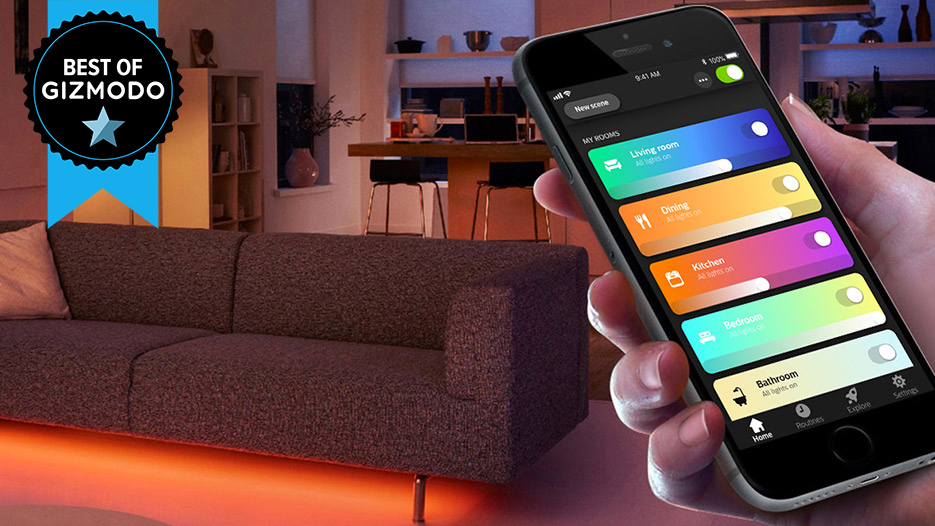
Our pick: Philips Hue ($US70 ($100) – $US350 ($502))
The first smart home product that was more helpful than hassle, the Philips Hue lighting system has been around since 2012, and over the years has expanded to include almost every type of light bulb and fixture any modern decor could require. Using a mobile app, the bulbs can be remotely activated, dimmed, scheduled, triggered by a motion sensor, tinted, and even connected to a voice-activated smart assistant like Amazon’s Alexa or Google Assistant. They’re not natively wi-fi, however, so you’ll need a hub if you want to give all the lighting in your home a smart upgrade. We recommend starting with the $US70 ($100) E26 Hue White Starter kit which includes the hub and two white-only bulbs, and then expanding from there.
Also consider:
If you want a more streamlined smart lighting solution that’s easier to set up and install without a hub or a bridge, Philips now offers a Bluetooth version of its smart bulbs that start at $US15 ($22) for a soft white version. They connect directly to a special version of Philips’ Hue app and don’t offer quite as many features as our official smart lighting pick (like timers or compatibility with other accessories such as motion sensors) but the bulbs also work with Philips’ Hue Bridge if you decide to further upgrade your home’s smart lighting.
The best smart security camera
Who are you?
You’re a little uneasy heading to work every morning given your sprawling gadget collection, and you’d like to be able to keep an eye on your home while you’re away. You might also have a new addition to your family, but can’t bring yourself to spend hundreds of dollars on a dedicated baby cam that looks like a baby’s toy.
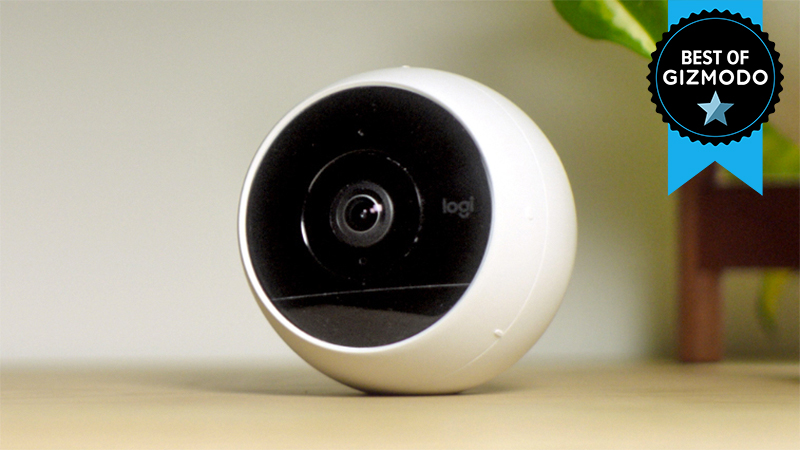
Our pick: Logitech Circle 2 ($US180 ($258) – $US200 ($287))
What sets most of the smart home security cameras apart isn’t the wide field-of-view of their lenses, or the resolution of their sensors; it’s the software they all rely on for actually monitoring your home. The Logitech Circle 2 is one of the easiest to set up, and through the mobile app and an online service, with a simple tap you can get a condensed timelapse review of everything the camera saw throughout a 24-hour period — without a monthly fee. It’s also waterproof, shoots in the dark, starts at $US180 ($258) if you’re OK with it being tethered to a power cord, and offers basic image detection features like recognising human beings (but not individual faces) or focusing its motion detection on a specific area of its expansive 180-degree view of a room.
Also consider:
If you’re after a little more intelligence in a security camera, which will help reduce the number of alerts you need to pay attention to, and false positives, the Lighthouse knows the difference between kids and adults, or man and beast. You can also set up custom alerts, so if the camera recognises your kids’ faces when they get home, but not their new friend that’s tagged along, you’ll be prompted. However, at $US299 ($429) plus a monthly fee to take advantage of all the AI-powered features the Lighthouse offers, it’s a little pricier than our first choice.
The best smart home gym machine
Who are you?
If you’ve got a bit of extra room in your home and are looking for a machine to help you stay in shape so you can avoid paying for a gym membership, a good smart home fitness machine could be exactly what you need.
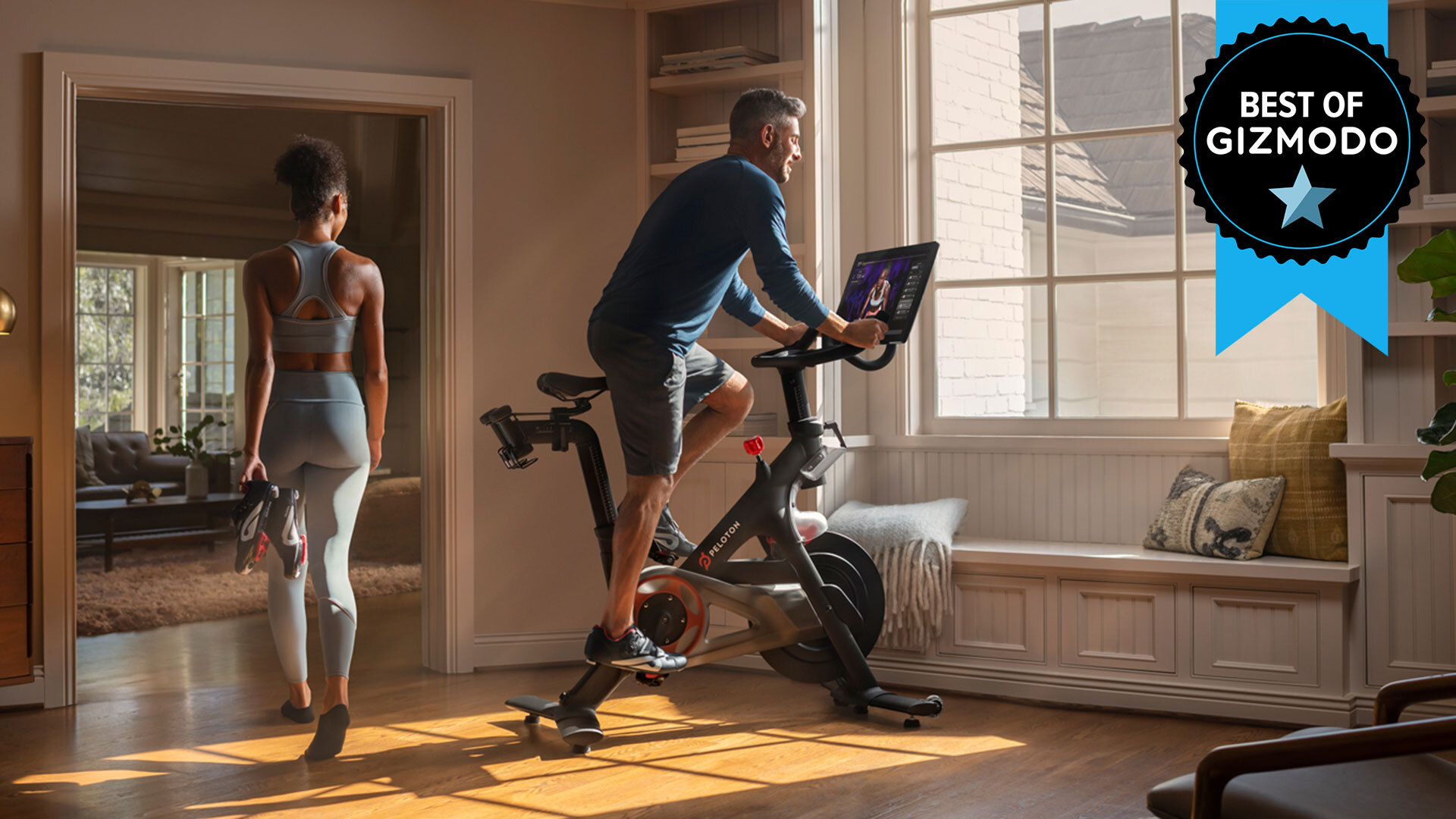
Our pick: Peloton Bike ($US2,245 ($3,218))
There’s no cheap way to do “connected” at-home fitness — especially if you want something with a nice screen that comes with support for things like heart rate-monitoring. Bigger pieces of equipment, like stationary bikes or weight-lifting machines, will set you back thousands — plus, you’ll probably have to pay for a monthly subscription on top of that. But for the space, cash, and platform, the original $US2,245 ($3,218) Peloton Bike remains a great choice, with lots of live and on-demand videos and a design doesn’t take up too much space. Or if cycling really isn’t your thing, the $US1,495 ($2,143) Mirror gets you a wide range of classes like boxing, yoga, and cardio — just make sure your wifi can handle the streaming.
How has this list changed? Read back through our update history:
5/1/2019: Replaced the Eero with the Netgear Orbi RBK50 as our choice for the best whole home wifi solution, and replaced the Linksys’ Velop AC2600 with Google Wifi for our “Also consider” choice.
8/28/2019: Replaced the Sylvania Smart+ LED A19 soft white light bulbs with the Philips Hue Bluetooth bulbs for our best smart lighting “Also consider” choice.
11/13/2019: Replaced Google Wifi with Google Nest Wifi for our best whole home wifi solution “Also consider” choice. Replaced Google Home Mini with the Google Nest Mini as the best smart assistant choice. Replaced the Google Home Hub with the Google Nest Hub Max for best smart home hub.
07/06/2020: Picked a best smart lock — August’s Wi-Fi Smart Lock — and the best smart home gym equipment, Peloton’s bike.
Gizmodo staffers Sam Rutherford and Victoria Song contributed to this guide.
Editor’s Note: Release dates within this article are based in the U.S., but will be updated with local Australian dates as soon as we know more.
